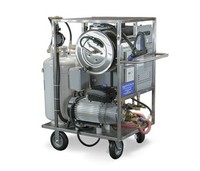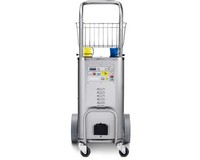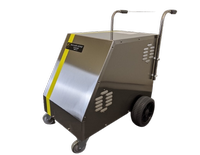We at Tomi Cellars practice what has become known as Post-Modern winemaking techniques. In a nutshell, that means using time-honored, pre-World War II techniques to build and structure the wines – and supplementing this with the latest in wine science - only when called for. We don’t make wine by the numbers, and we don’t make wine by volume.
To begin with, all of our fruit comes from ultra-premium vineyards located on the Central Coast of California. Vineyards where fruit yields are limited to between 2.5~4 tons per acre. Vineyards where the canopies are carefully managed for optimal sunlight and warmth. Vineyards that are sustainably and/or regeneratively farmed whenever possible and available. We harvest when the trifecta of optimal sugar levels, acid levels and fruit flavor maturity has been reached. Harvests are done by hand at night and/or very early morning, so that the fruit remains cold while handling. This keeps the fruit firm during de-stemming and minimizes the risks of volatile acidity taking hold.
For the reds, we don’t crush the grapes while de-stemming, as this would release all the juice at once, and fermentation would go very quickly. Instead, we keep the berries whole and do a cold-soak, often infusing dry ice into the fermentation bins to keep the temperature below fermentation levels ( <40F). This gives the juice that is released additional time on the skins. After a week or two of a cold-soak, we let the berries warm up and then inoculate for fermentation.
We don’t rely on native yeasts to complete a fermentation, as this can be risky. So we use carefully selected isolated strains of yeast to best match the characteristics of the individual varietals and style of wine intended, and to ensure a complete primary fermentation. But we avoid fermentation aids, such as diammonium phosphate (DAP). Adding DAP is like feeding Twinkies to the yeast's diet, and is actually counter-productive to creating a microbially stable environment in the barrel.
We follow a barrel cleansing protocol that includes a high temperature/high pressure (185F @ 2,000psi) spray washer, dry steam (347° F) and Ozone-infused water to rinse. This protocol ensures that the barrels are sanitized and infection-free, and allows us to re-use the barrels indefinitely in our barrel-aging program.



Regarding barrel-aging, for our Red wines - particularly the bigger, bolder Reds - we do what is known as extended barrel aging. The micro-oxygenation that is facilitated by the ingress and egress through the grain of the wood works to soften the tannins and provide a silky smooth mouth feel, and to integrate both flavors and aromas. The extra time in the barrel ages the wines at nominally five times the rate (i.e. 5 x faster) than comparable bottle aging. We rack and return each barrel of wine back in to the same barrel, rather than blending them. Every barrel is unique and evolves in it's own way. By doing this, we can find the most elegant blend for a given batch of wine. We often do clonal and varietal blendings. These blends are typically returned to the barrel for several months in order to become better integrated - and to ensure microbial stabilty - before bottling.
We don’t fine and we don’t filter our wine. While we can’t and don’t make a claim to be ‘organic’, we begin with fruit produced using organic practices and add very minimal amounts of SO2 throughout the aging process. We prefer to let microbial stability play out in the barrel - this way, there is minimal risk of things going sideways in the bottle.